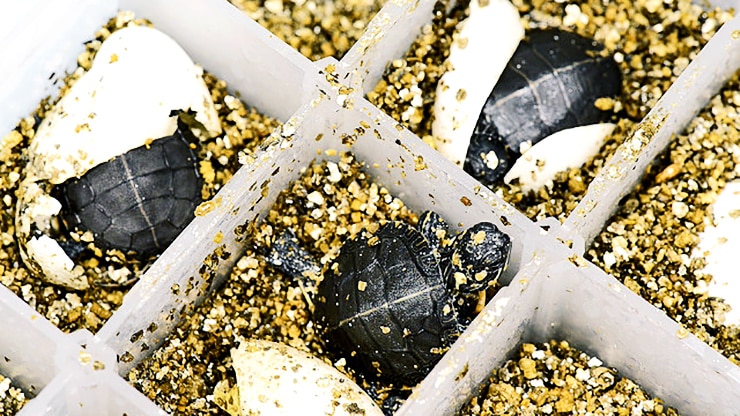Exposure to the chemical Bisphenol A may permanently alter the genes of painted turtles, a new study suggests.
BPA is a chemical that is used in a variety of consumer products, such as food storage containers, water bottles and certain resins.
In previous studies, Cheryl Rosenfeld, an investigator in the University of Missouri Bond Life Sciences Center, along with colleagues determined that BPA can disrupt sexual function and behavior in painted turtles. Now, the team has identified the genetic pathways that BPA exposure alters during early development.
Turtles are known as an “indicator species” because they can be a barometer for the health of the entire ecosystem. By understanding the possible effects endocrine disrupting chemicals have on turtles, researchers might be able to understand the possible effects such compounds have on other species.
“Painted turtles lack sex chromosomes, and their gender is primarily determined by the incubation temperature of the egg during development—cooler temperatures yield more males while warmer temperatures yield more females,” says Rosenfeld, who also is an associate professor of biomedical sciences in the University of Missouri’s College of Veterinary Medicine.

“Previously, our research team found that exposure to BPA might override the brain development of male turtles and could induce female type behaviors. Our goal for this research was to determine the genetic pathways that correlate to the behavioral changes we identified.”
BPA trumps temperature to decide turtle sex
Researchers examined whether BPA and ethinyl estradiol (EE), a hormone found in birth control pills, affect the global regulatory pathways of the brain. The same turtles from earlier behavioral testing were subjected to a gene expression analysis and 235 genes were identified as being altered in turtles exposed to BPA. The gene expression changes identified in the BPA group were found to significantly alter mitochondrial and ribosomal pathways.
Mitochondria are the “power house” for cells and are responsible for breaking down and converting nutrients into usable energy. Ribosomal pathways produce proteins, which are needed to repair damage and direct chemical processes. Increased energy production in brain cells can thus affect cognitive flexibility and memory.
“Metabolic pathways are not well documented in turtles. We were able to use human metabolic models to infer pathway changes in turtles,” says Scott Givan, associate director of the university’s Informatics Research Core Facility and a coauthor of the study, published in Physiological Genomics. “After analyzing the genes, we were able to link gene expression changes to behavioral changes.”
Rosenfeld notes that this is the first study to show a correlation between changes in gene expression patterns and behavioral changes in turtles exposed to endocrine disrupting chemicals.
“Correlation of altered gene expression patterns with the behavioral changes of the animals almost a year after the original exposure indicates that developmental exposure to BPA can lead to long-lasting and likely permanent effects on neurobehavioral responses,” Rosenfeld says.
Others from the University of Missouri’s Bond Life Sciences Center, Westminster College, and the Saint Louis Zoo Institute for Conservation Medicine contributed to this research. Mizzou Advantage, the Office of Research, and the Bond Life Sciences Center at the University of Missouri provided funding. The content is solely the responsibility of the authors and does not necessarily represent the official views of the funding agencies.
Source: University of Missouri



